Back workouts can be split it into upper back, middle back or lower back, and exercises can be done in 3 sets of 10 to 12 repetitions, depending on your instructor’s plan. It can be done with gym equipment, like cable or lever machines, or just with dumbbells and body weight at home.
A back workout is divided into the muscle groups you wish to train. It should be monitored by a personal trainer and can vary depending on each person’s health goals.
For results to be noted, you should ensure you are exercising to failure and following your plan closely with respect to sets and rest time. You should also ensure you are well hydrated and eating a healthy, balanced diet, which can be monitored by a registered dietitian.
Back exercises
Check-out some exercises to workout your back muscles:
1. Bent-over rows with barbell

With your feet shoulder distance apart, hinge forward at the hips. Grip a barbell in front of you, keeping your hands shoulder distance apart. Flex your elbows and bring the barbell toward your abdomen. Then lower it to the initial position in a controlled movement.
This exercise is indicated to work your middle back and side muscles, also referred to as the mid trapezius, infraspinatus and latissimus dorsi muscles.
2. Lat pulldown machine
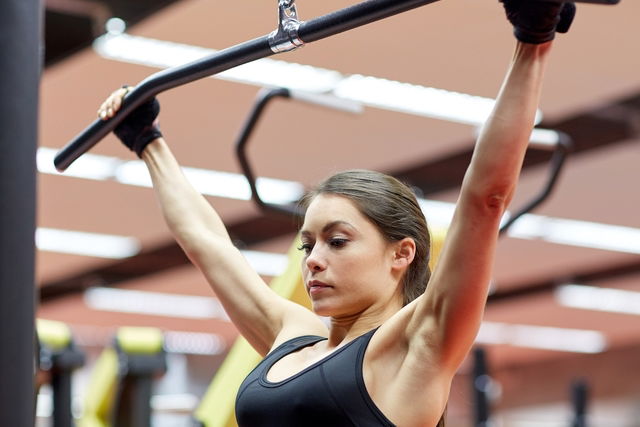
The lat pull down machine is performed in a seating position, with your chest facing the machine. Place your hands on the bar above your head and bring the bar down, toward your chest, then slowly allow it to raise. To ensure this exercise is done correctly, you torso should not rock back and forth when pulling the bar down and raising it up. Only your arms should be working. Keep your abdomen contracted to stabilize your torso.
This exercise mainly works the muscle in the middle back, also known as the latissimus dorsi muscle.
3. High row machine

The high row machine is used by facing forward, with your chest facing the machine, while keeping your back straight. Place your hands on the handles and pull them down, noting that your arms will open wider on the way down, and become narrower on the way up.
This exercise works all your back muscles, but it will particularly train your latissimus dorsi and lower back.
4. Bent-over rows with barbell

With your feet shoulder distance apart, hinge forward at the hips. Grip a barbell in front of you, keeping your hands shoulder distance apart. Flex your elbows and bring the barbell toward your abdomen. Then lower it to the initial position in a controlled movement.
This exercise is indicated to work your middle back and side muscles, also referred to as the mid trapezius, infraspinatus and latissimus dorsi muscles.
5. Landmine row
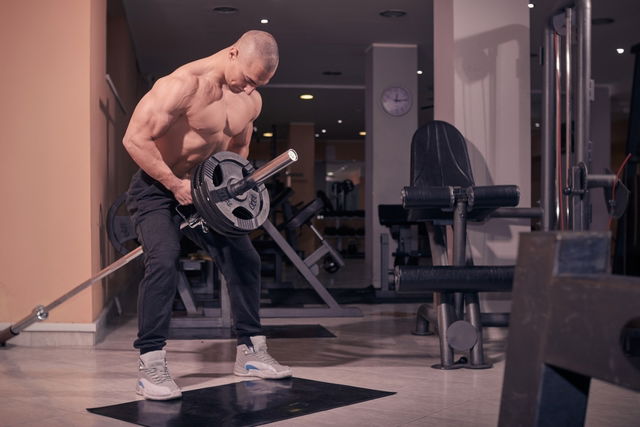
To perform a landmine row, be sure to secure the bar to the landmine support. If the bar does not have a T shape, you can use a double-D handle to grip the bar and ensure better stability.
Once the bar is set up, stand in front of the bar facing it and bend your knees. Keep your abdomen contracted the entire time. Then bring the bar toward your chest and feel your scapula close. Return to the initial position. To make this exercise harder and to work more muscles, you can add weight to this bar.
6. Upright barbell row
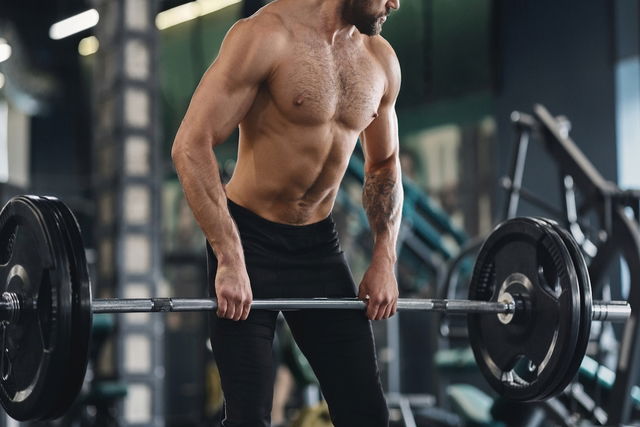
An upright bar bell row is performed using a barbell with a narrow or wide grip, depending on your personal trainer’s plan and the muscles you wish to work.
Grip the bar, stand up straight and and bring it up toward your chin. Then return to the initial position and repeat. You can also perform this exercise on a cable machine using a straight bar.
7. One arm dumbbell row

A one arm dumbbell row is a great exercise for strengthening the latissimus dorsi, trapezius and deltoid muscle in the shoulder.
To perform this exercise, support one knee and one hand (from the same side of the body) on a bench. Hold a dumbbell using your other hand. Stabilize your torso by activating your core, and bring your dumbbell up by flexing your elbow. Complete all reps on one side, before swapping to the other side.
As an alternative, you can lean on a high surface and place one leg in front of the other to perform this exercise.
8. Cable pullover

A cable pullover is a great exercise for a back workout. It works the latissimus dorsi muscle. Place a straight bar on a cable machine and take a few small steps back. Lean forward, grip the bar above your head, and bring the bar down in front of you, making sure to feel your scapulae close.
9. Lever seated reverse fly
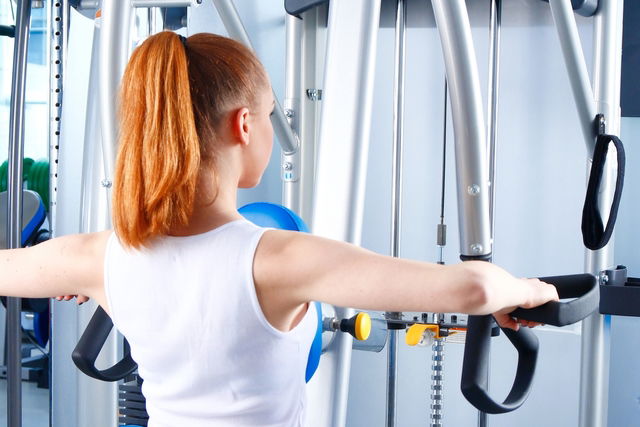
This exercise is performed while sitting facing the machine, with your chest resting on the bench. Hold the grips in front of you, then open your arms to the side until your feel your back muscles contract. Then return to the starting position.
The reverse fly works the muscles in the neck all the way to the mid back, which are known as the rhomboid, posterior deltoid and inferior trapezius muscles.
10. Pull ups
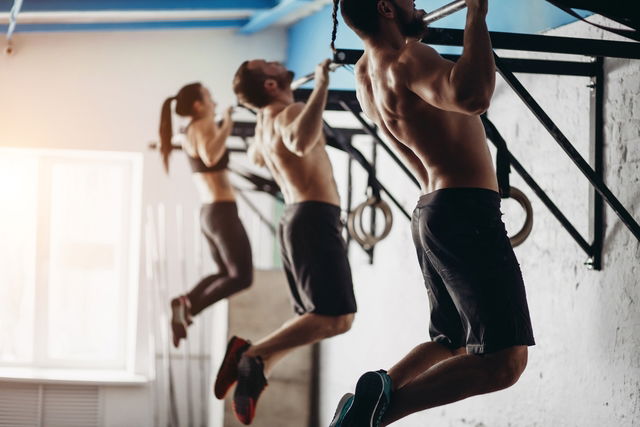
A pull up bar is a great exercise for both back and biceps. It can be down with a narrow or wide grip bar. Using an underhand grip, hold onto the bar and contract your abdomen, then contract your back muscles to bring yourself up. You may need assistance to perform more repetitions.
11. Assisted pull ups
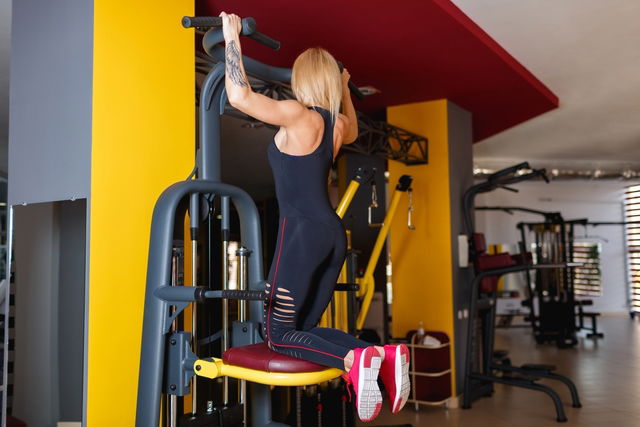
Similar to the above exercise, an assisted pull-up consists of the same movement, although you are kneeling on a pad which allows for better support. Using an open or closed grip, bring yourself toward the top of the bar, and slowly lower yourself down to the starting position.
12. Seated cable row
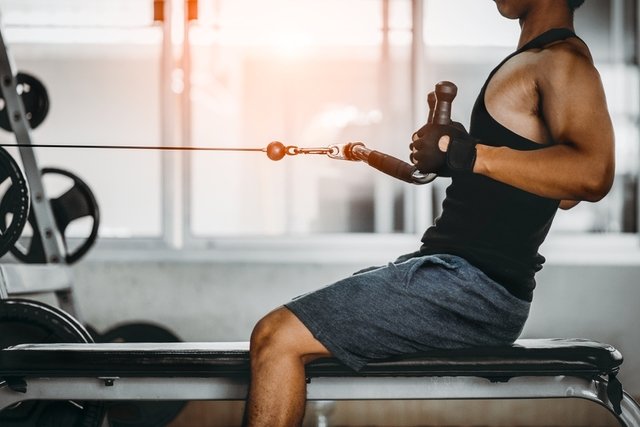
The seated cable row is done using a rowing machine. It helps to strengthen mainly the scapular muscles in the upper back, as well as the biceps and elbows.
To do this exercise, adjust the weight on the machine and attach the safety pin. Then sit on the bench with your feet on the machine, knees slightly bent, back straight and abdomen contracted. Pull the handle back towards your lower belly, aiming to bring your shoulder blades together. Return to the starting position until your arms are fully extended.
12. Plank

There are many ways to perform a plank. The most common way is to lay on the ground, belly down. Support your body on your elbows and feet and hold. This exercise works the trapezius muscles, which start at the neck and go down to the mid back.
Considerations for back workout
There are some important considerations to keep in mind when training your back, such as maintaining optimal body mechanics and posture when performing each exercise, and using the right amount of weight to to avoid overload or muscle injuries.
Furthermore, it is also important to always consult a general practitioner or cardiologist before starting any type of physical exercise for the first time to assess your general and cardiovascular health.
